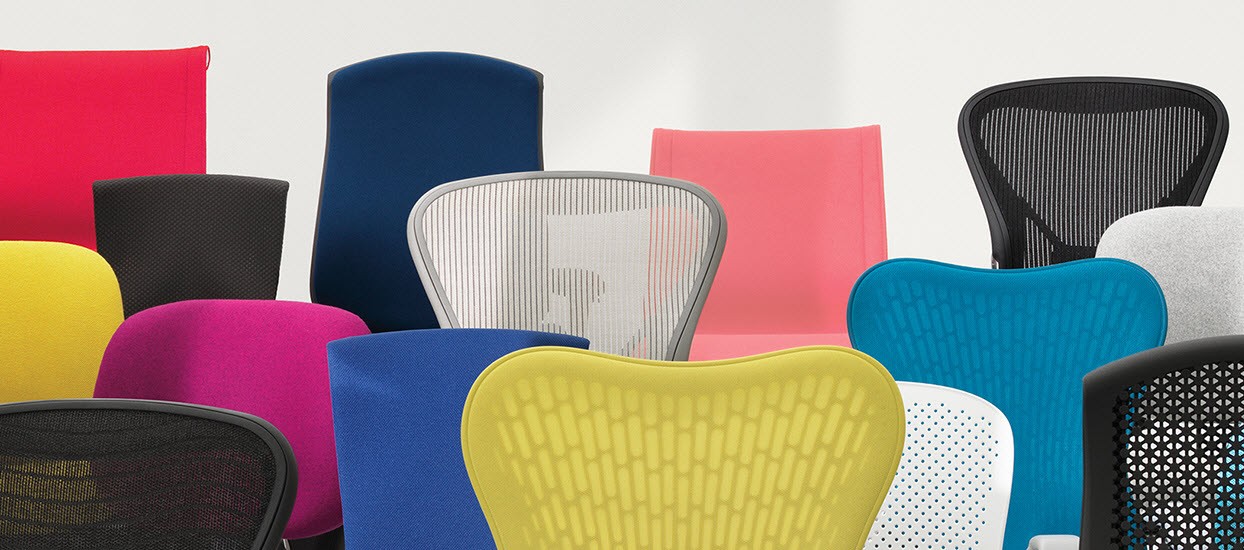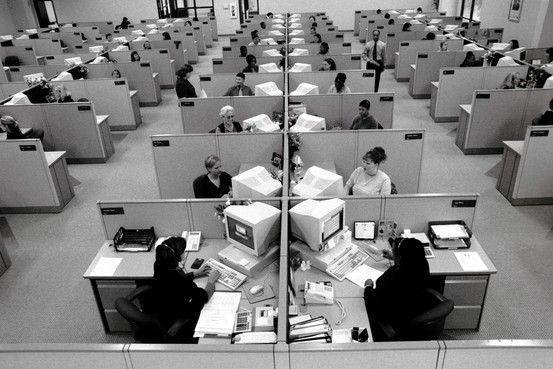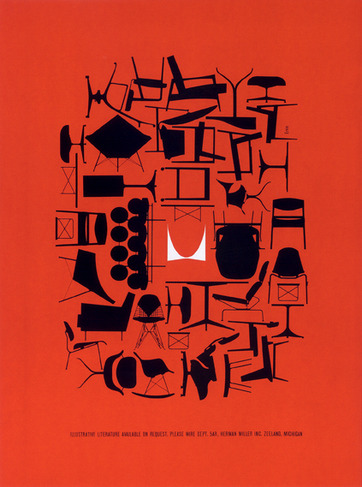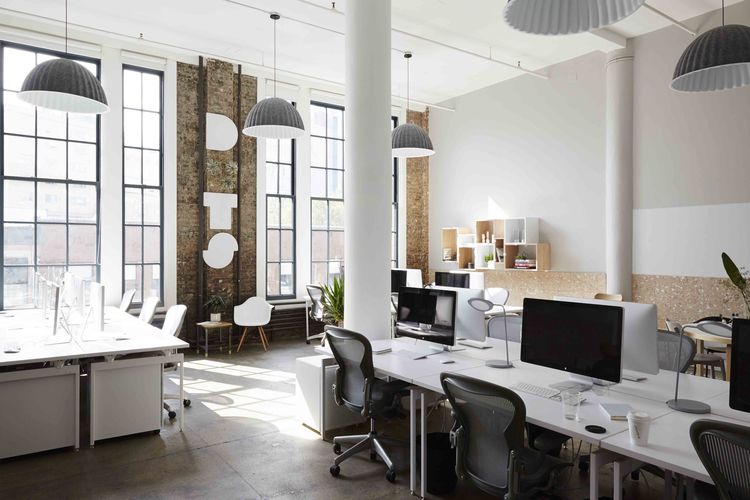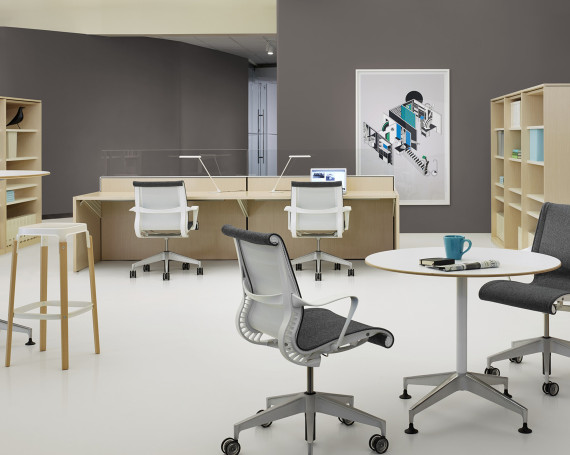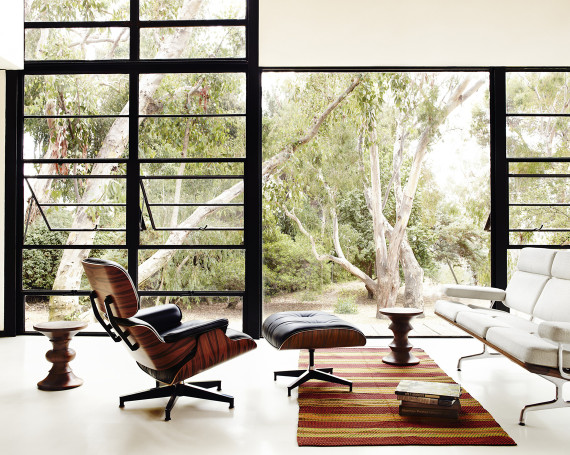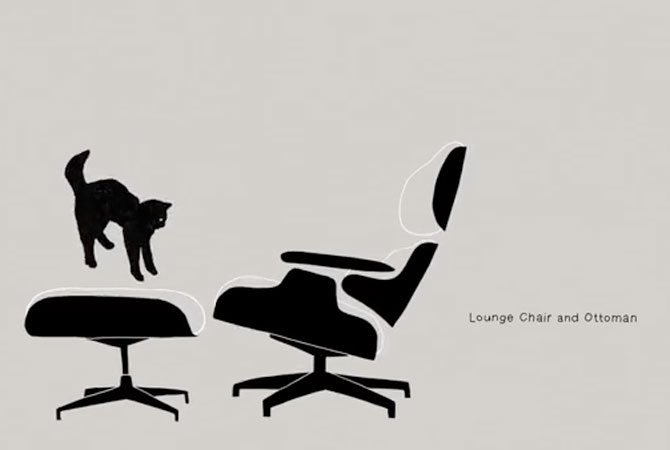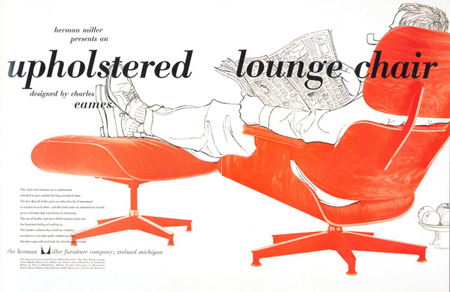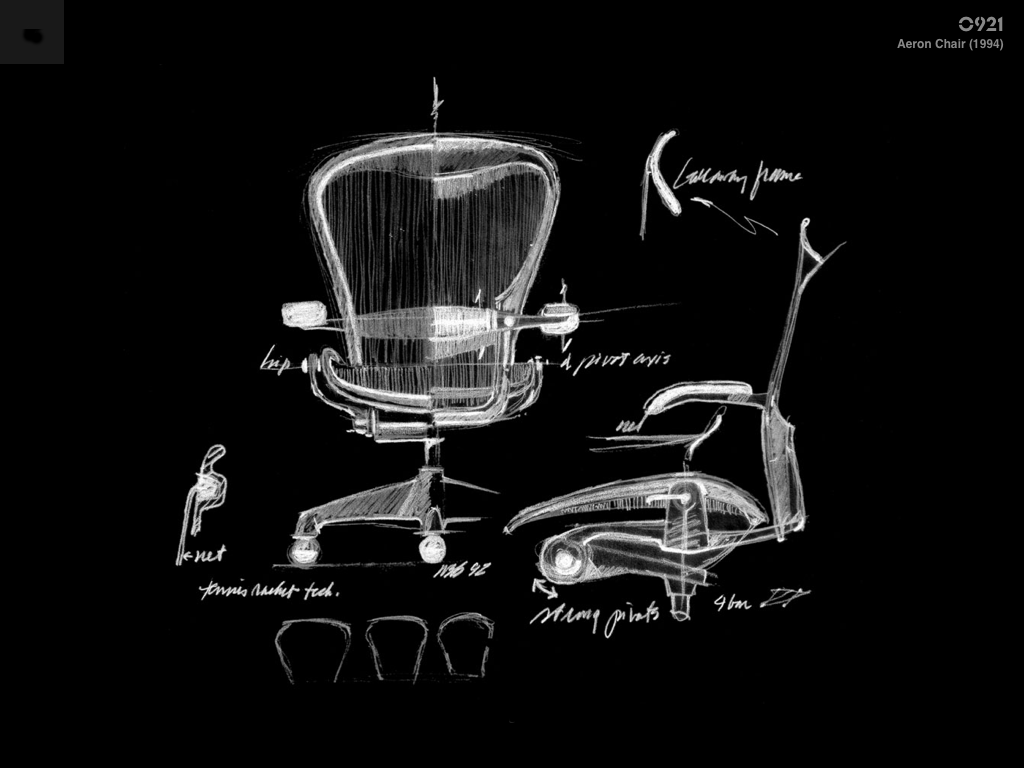The history of the company’s growth over time is remarkable. In 1939, the company was opening its first showroom in Chicago’s Merchandise Mart. From that point on, company growth increased every year with more plants, offices, and showrooms opening around the country and eventually around the world. Just three years after opening that showroom in Chicago, Herman Miller opened a second showroom in Los Angeles, California. As the company began to bring on more designers who were producing specific product lines, new manufacturing sites had to be created. In 1949, all of the company’s molded plywood manufacturing for the Eames designs moved from Grand Haven, Michigan to Zeeland, Michigan. In addition, another manufacturing plant opened that year in Venice, California, a site that later became the Eames Studio.
Herman Miller was a booming business, and in 1958 the company began building its headquarters complex in Zeeland. George Nelson, design director, was the primary architect of the project. At the same time that construction was underway in Zeeland, the company was embarking on two other major projects — a new plant in Venice, California and a showroom in San Francisco, California. With a company of growing proportions, the decision was made to incorporate, and the furniture company became known as Herman Miller, Inc. in 1960. D.J. De Pree became chairman of the board, and his son, Hugh De Pree, became president and CEO of Herman Miller Inc. In the same year the company was incorporated, the Herman Miller Research Division was opened in Ann Arbor, Michigan, further expanding the company’s reach and improving the company’s ability to incorporate the latest technology into its products.
Throughout its history, the company has taken risks and responded to changing environments in order to offer its customers high quality products that focus on their specific needs. Through collaborative relationships with talented designers, the company continues to gain recognition throughout the global community as a company known for its innovation, problem-solving design, and quality.
